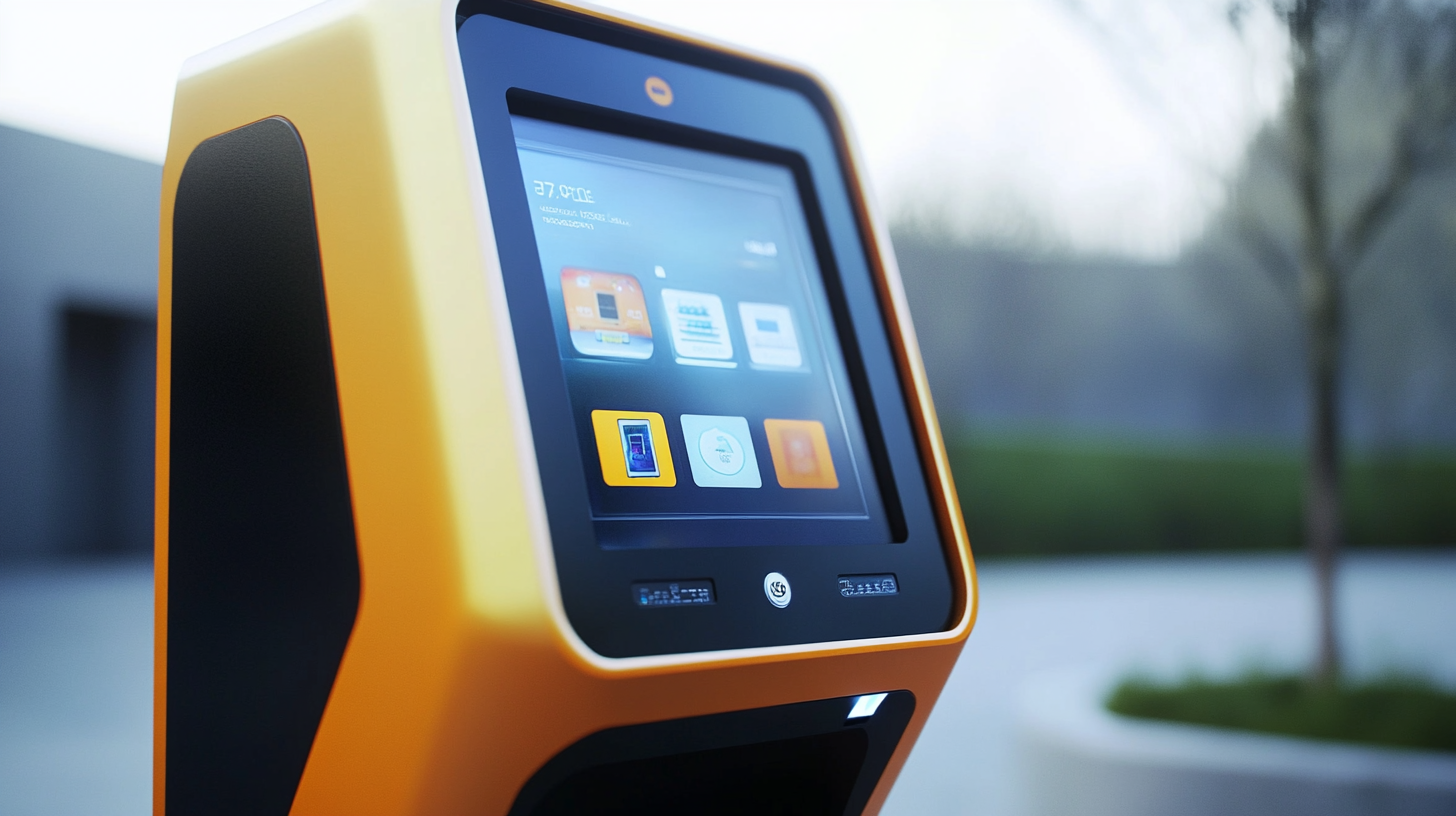The Definitive Resource for Sourcing Touch Screen Vending Machines Worldwide
In today's rapidly evolving vending industry, the introduction of the Touch Screen Vending Machine has transformed the way consumers interact with these automated retail solutions. Gone are the days of traditional push-button interfaces; now, consumers can enjoy a more intuitive and engaging experience. With the ability to display vibrant images, detailed product information, and personalized recommendations, these machines not only cater to customer preferences but also enhance overall satisfaction. This blog serves as a comprehensive resource for sourcing Touch Screen Vending Machines worldwide, catering to vendors and businesses looking to stay ahead in this competitive market.
As the demand for innovative and user-friendly vending solutions continues to rise, understanding the key features, manufacturers, and trends in the Touch Screen Vending Machine landscape becomes essential. Whether you are a seasoned entrepreneur or new to the vending industry, this guide will provide you with valuable insights and connections to help you make informed decisions. Join us as we explore the diverse range of Touch Screen Vending Machines available globally, ensuring you find the perfect fit for your unique business needs.

Understanding Touch Screen Vending Machines: Technology and Features
Touch screen vending machines have revolutionized the way consumers engage with automated retail technology. These machines offer a user-friendly interface that enhances the purchasing experience, making it easier for customers to navigate through a variety of products. Equipped with vibrant displays and intuitive layouts, touch screen vending machines allow users to browse items visually, streamlining the selection process. This technological advancement not only attracts more customers but also increases sales for operators. The features of touch screen vending machines are vast and versatile. Many come integrated with advanced payment systems, supporting multiple payment options including credit cards, mobile wallets, and even cryptocurrency. This flexibility caters to the needs of modern consumers who seek convenience and security. Additionally, these machines can be programmed to offer personalized product recommendations based on user preferences, creating a tailored shopping experience. Some models also incorporate inventory management systems that alert operators when stock is low, ensuring that the machines are always stocked with popular items. Moreover, touch screen vending machines are increasingly equipped with connectivity features, such as Wi-Fi and Internet of Things (IoT) capabilities. This connectivity allows for real-time monitoring and data analytics, providing operators with valuable insights into purchasing trends and consumer behavior. Furthermore, many touch screen machines now offer interactive features like advertising displays and customer loyalty programs, which can enhance engagement and promote brand loyalty. As technology continues to advance, touch screen vending machines are poised to become an integral part of the retail landscape worldwide.

Key Suppliers and Manufacturers of Touch Screen Vending Machines Globally
In the era of advanced technology, touch screen vending machines have emerged as an innovative solution for businesses looking to enhance customer interaction and convenience. These machines not only offer a wide range of products but also provide an engaging user experience. When sourcing touch screen vending machines, it's essential to identify key suppliers and manufacturers globally who specialize in this niche market.
Leading suppliers in the touch screen vending machine industry are known for their quality, reliability, and cutting-edge technology. Companies like Crane Merchandising Systems and Jofemar have established a solid reputation by offering customizable vending solutions that cater to various needs, from snacks and beverages to electronics. Their machines are designed to be user-friendly and often come equipped with advanced payment options, including mobile payments and cashless transactions, making them highly appealing to tech-savvy consumers.
In addition to established giants in the industry, several emerging manufacturers are disrupting the market with unique offerings. Brands such as Avanti Markets focus on healthy vending solutions that leverage touch screen technology to provide nutritional information and promote wellness. These new entrants are pushing the boundaries of traditional vending, demonstrating that touch screen machines can cater to diverse consumer demands while remaining efficient and profitable for operators.
When choosing suppliers, businesses should consider factors such as machine versatility, customer support, and warranty services. As the demand for touch screen vending solutions continues to grow, partnering with reputable manufacturers will ensure success in this dynamic market segment.

Comparative Analysis of Touch Screen Vending Machines by Region
As the demand for touch screen vending machines grows, a comparative analysis by region reveals significant disparities in the market's development and consumer preferences. Different regions have embraced intelligent vending solutions at varying rates, influenced by cultural factors, economic conditions, and technological advancements. For instance, regions with higher urbanization levels tend to adopt these machines more widely due to their convenience and appeal to tech-savvy consumers.
In North America, the intelligent vending machine market is booming, driven by innovations in cashless payment systems and product personalization. The integration of artificial intelligence allows for real-time inventory management, enhancing the user experience and operational efficiency. Meanwhile, in regions like Asia-Pacific, the rapid urbanization and growing disposable incomes are propelling the demand for smart vending machines that cater to diverse consumer needs, from snacks to electronics.
Europe, on the other hand, is witnessing a push towards sustainable vending solutions, with a notable emphasis on eco-friendly products and packaging. As consumers become more environmentally conscious, vending machine operators are adapting by incorporating sustainable practices into their offerings. This regional focus on sustainability not only differentiates products but also aligns with broader market trends toward responsible consumption. Overall, understanding the nuances in regional preferences is crucial for manufacturers and vendors looking to optimize their offerings in the competitive touch screen vending machine landscape.

The Future of Touch Screen Vending Machines: Trends and Innovations
The future of touch screen vending machines is set to be revolutionary, reflecting significant trends and innovations that will reshape consumer interactions. With a projected growth in the global intelligent vending machine market from $11.47 billion in 2025 to $36.89 billion by 2032, we are witnessing an exciting shift towards smarter, more efficient machines. This rapid growth, at a CAGR of 18.2%, highlights the increasing demand for touch screen interfaces that enhance user experience and provide a seamless transaction process.
In particular, the surge in cashless payment options is a game-changer, driving innovations in vending machine designs. Aligning with consumer preferences for convenience, touch screen machines now incorporate features like mobile payments and contactless transactions. Moreover, the introduction of advanced technologies, such as artificial intelligence, is transforming the way vending machines operate, allowing for personalized product recommendations and improved inventory management based on consumer behavior.
The Singapore vending machine market exemplifies this trend, anticipating a growth rate of 6.09% to reach approximately USD 603.17 million by 2030. Innovations that cater specifically to local tastes—such as the rise of premium beverage vending options—illustrate how technology can adapt to evolving consumer demands. As these touch screen vending machines become more sophisticated, they are not only redefining convenience but also creating unique experiences for users, marrying technology with everyday consumer needs.
Best Practices for Sourcing and Implementing Touch Screen Vending Machines
When it comes to sourcing touch screen vending machines, understanding best practices is crucial to ensure successful implementation. First and foremost, businesses should conduct thorough market research to identify reputable manufacturers and suppliers. This involves evaluating their product offerings, customer reviews, and after-sales support. A vendor that prioritizes innovation and quality can significantly enhance the user experience, which is vital in today’s technology-driven marketplace.
Once a suitable supplier is selected, careful attention must be paid to the customization options available. Touch screen vending machines should not only be functional but should also cater to specific consumer needs. This might include tailored product selections, nutritional information displays, or payment flexibility through mobile options. Engaging with the vendor to create a machine that resonates with target demographics can boost sales and customer satisfaction.
Finally, training staff on machine operation and maintenance is imperative. Comprehensive training ensures that team members are equipped to handle day-to-day operations efficiently, troubleshoot issues, and provide excellent customer service. Regular updates and feedback sessions with the supplier can foster continued innovation and improvement, ensuring the vending machines remain competitive and efficient. Implementing these practices can lead to a successful deployment of touch screen vending machines that effectively meet modern consumer demands.

